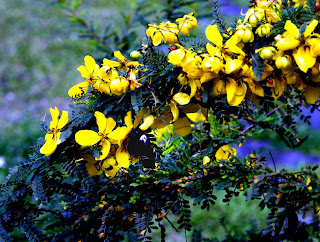Requiem to a Dead Coral
- Relic of our Dying Mother Earth
Photos and text by Dr Abe V Rotor
Someday these children will understand what "ruined nature" means.
A broken coral is permanently dead; it cannot serve as foothold of baby
corals (larvae) to become polyps and grow to maturity, much less to
form a colony and community with other organisms. Likewise, seaweeds
will hardly survive. In short, the ecosystem in which they were once a
part is dead.
Dead coral samples, Morong Bataan, April 16, 2014
My kin are dying in mass grave of toxic water spurred by global warming,
acid rain formed by gases and particles rising and mixing with the clouds:
My symbionts - the algae and other protists, monerans, that catch the sun
through the magic of photosynthesis, their products I cannot live without;
My tenants free in my household their abode, living in unity and harmony
in a pool of energy, passing on to others their share through the food web.
My transient friends that come by to rest along their route to other places,
to find refuge from danger, tide with the season, then resume their journey;
My colleagues living in vast colonies, growing dutifully over the bedrock
set by my forebears through the ages that protect the land from the sea;
My friend octopus ensconced in my crevices lurking in perfect camouflage
and mimicry, giant lapu-lapu its kingdom within my walls, a fort it made;
My favored guests the whale, dolphin, and sea cow, once land mammals
that turned to sea and never returned, are now orphans without a home;
My strange bedfellows, at one time lovable at others not, the sea urchin,
starfish that invade like an army, yet useful in keeping nature's balance;
My co-host of countless organisms, the seaweeds attached on my back
as thick as a forest, layer after layer, with the biodiversity of an ecosystem;
My enemies - the mudflat and sand bar - shifting and invading my territory,
and while I choke, sea grasses will soon grow, to which I gladly withdraw;
My gentle friend the tide that baths me everyday, washing away my dirt,
and keeping me clean and fresh, so with my tenants and visitors alike;
My adopted children, a nursery I provide them, from early life to weaning,
as they prepare to go out into the open sea, strong, confident, and free;
My next generation of free swimming larvae in sheer numbers seeking
a permanent home to become polyps, and grow into corals like me.
My visitors from the human world, peering through the glass and lens,
the beauty of my world, no other can compare, now dead - and gone. ~
A healthy young coral reef, painting by the author
Beauty with a Coral at the former St Paul College QC Museum
- a false concept of aesthetics and conservation.
Life cycle of a coral (Internet)
An unspoiled coral reef (Internet)






















































